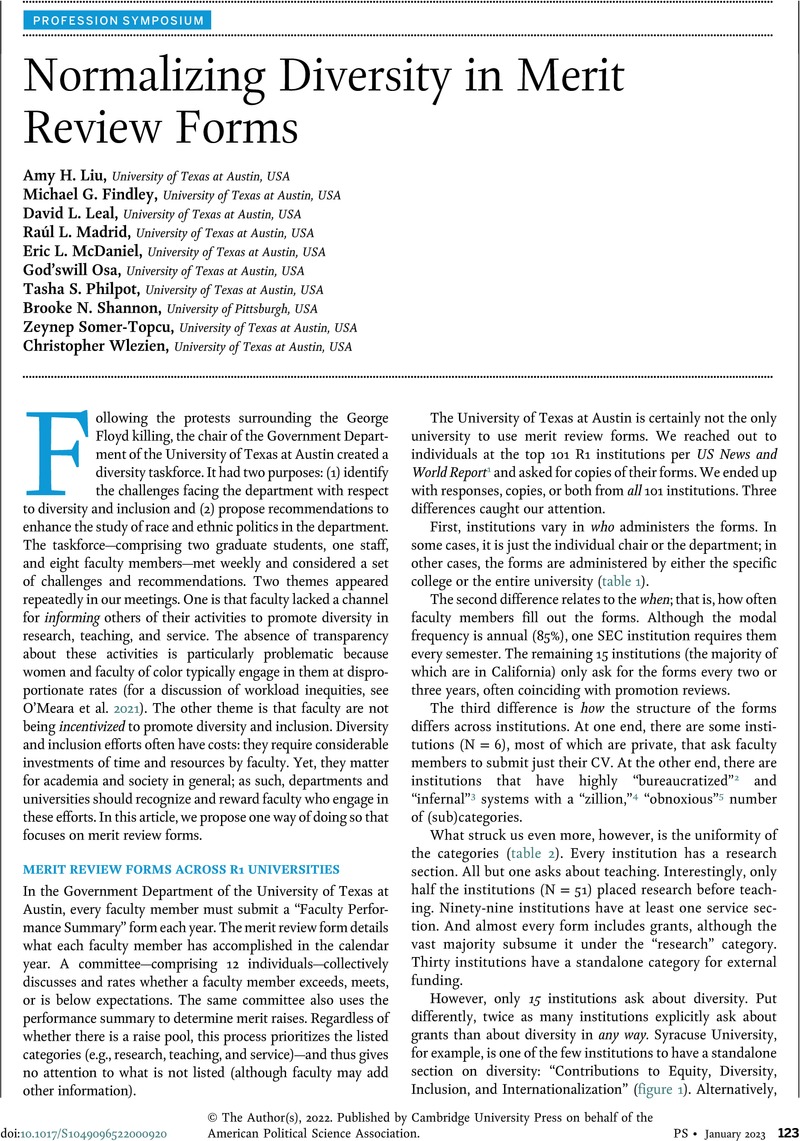No CrossRef data available.
Article contents
Normalizing Diversity in Merit Review Forms
Published online by Cambridge University Press: 05 October 2022
Abstract
An abstract is not available for this content so a preview has been provided. Please use the Get access link above for information on how to access this content.

- Type
- Structuring Inclusion into Political Science Recruiting, Progression, and Engagement
- Information
- Copyright
- © The Author(s), 2022. Published by Cambridge University Press on behalf of the American Political Science Association
References
REFERENCES
Anderson, Margo, and Fienberg, Stephen E.. 1999. Who Counts? New York: Russell Sage Foundation.Google Scholar
Ben-Nun, Pazit. 2008. “Respondent Fatigue.” In Encyclopedia of Survey Research Methods, ed. Lavrakas, Paul J., pp. 742–43. Thousand Oaks, CA: Sage.Google Scholar
Csata, Zsombor, Hlatky, Roman, and Liu, Amy H.. 2021. “How to Head Count Ethnic Minorities.” East European Politics 37 (3): 572–92.CrossRefGoogle Scholar
Gaines, Brian J., Kuklinski, James H., and Quirk, Paul J.. 2007. “The Logic of the Survey Experiment Reexamined.” Political Analysis 15 (1): 1–20.CrossRefGoogle Scholar
Hawkesworth, Mary. 2003. “Congressional Enactments of Race-Gender.” American Political Science Review 97 (4): 529–50.Google Scholar
O’Meara, Kerryann, Culpepper, Dawn, Misra, Joya, and Jaeger, Audrey. 2021. Equity-Minded Faculty Workloads. Washington, DC: American Council on Education.Google Scholar
Parkin, Michael. 2008. “Priming.” In Encyclopedia of Survey Research Methods, ed. Lavrakas, Paul J., pp. 611–12. Thousand Oaks, CA: Sage.Google Scholar
Parvini, Sarah, and Simani, Ellis. 2019. “Are Arabs and Iranians White? Census Says Yes, but Many Disagree.” Los Angeles Times, March 28, 2019. https://www.latimes.com/projects/la-me-census-middle-east-north-africa-race/Google Scholar
Tourangeau, Roger, Rips, Lance J., and Rasinski, Kenneth. 2000. The Psychology of Survey Response. New York: Cambridge University Press.CrossRefGoogle Scholar


